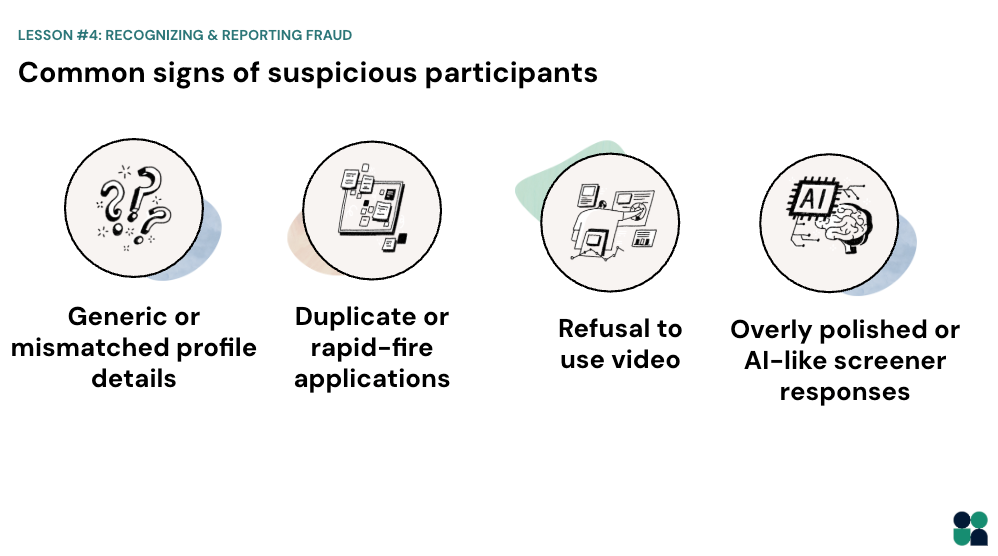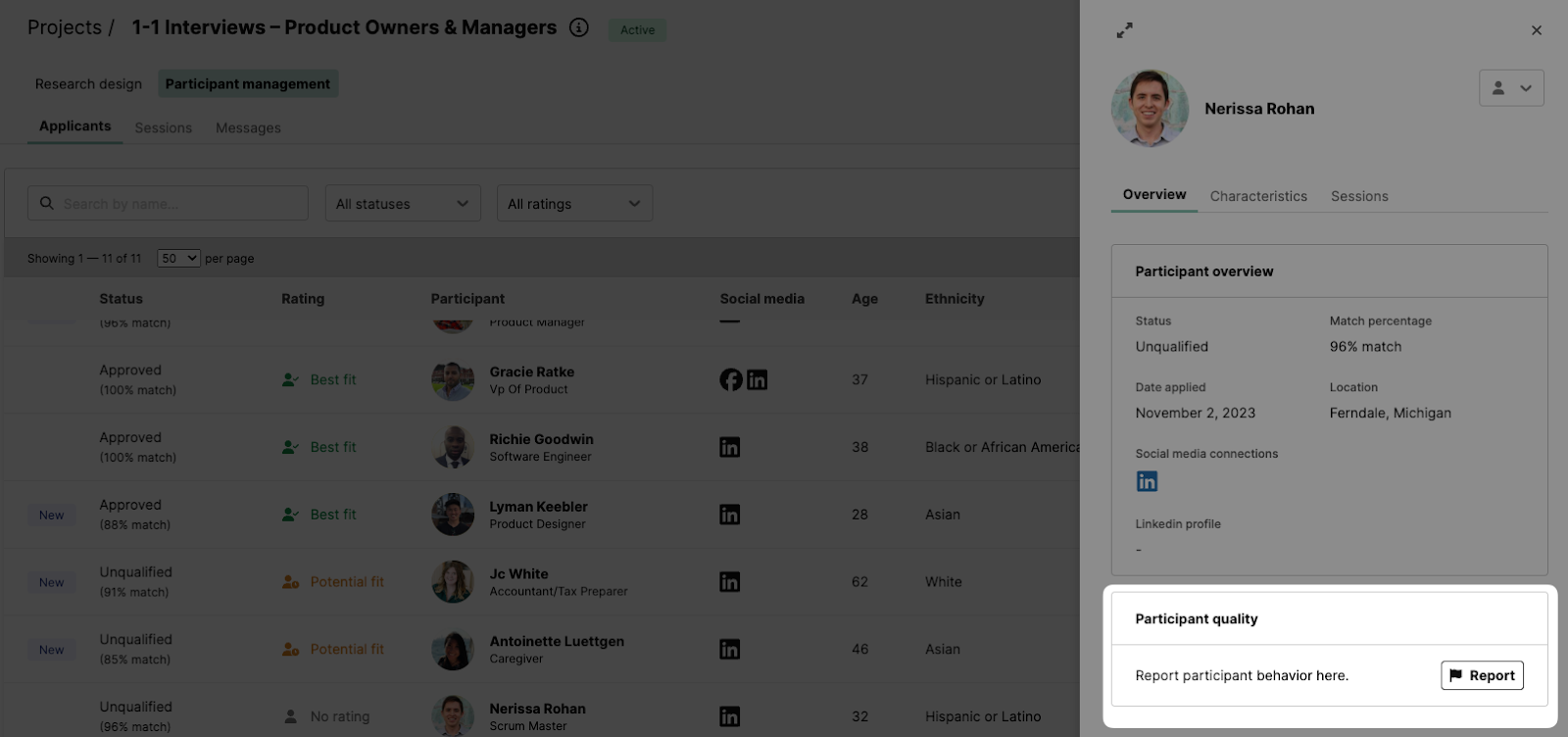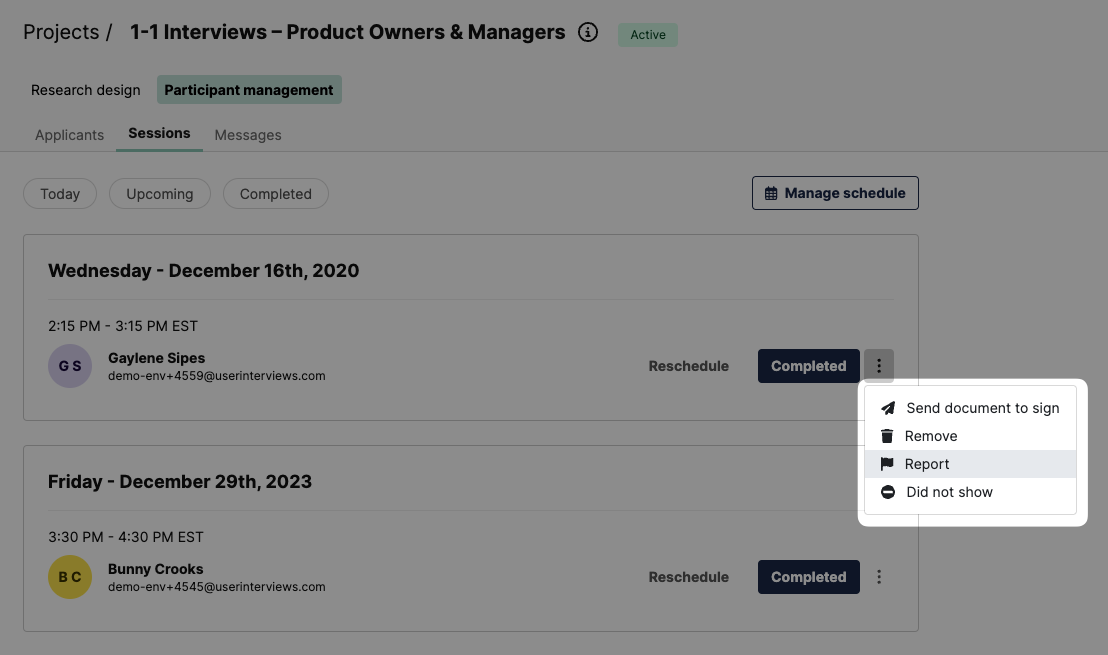

Recognizing & Reporting Fraud
Even with strong fraud prevention systems in place, no platform is 100% immune. That’s why your awareness as a researcher matters. Recognizing and reporting suspicious participants helps keep the entire User Interviews community healthy—and ensures you get reliable insights from authentic users.
In this final lesson of our Preventing & Recognizing Fraud course, you’ll learn:
- Common signs of suspicious participants
- How to report suspected fraud—before, during, and after sessions
- Why reporting matters
📹 Prefer watching to reading? This content is available as both an article and a video. Watch our Senior Product Manager, David Prentice, take you through the content in the video below or keep reading to dive in!
Common signs of suspicious participants

Fraudulent participants can be surprisingly convincing, but certain patterns tend to reveal them. Stay alert for:
- Generic or mismatched profile details (e.g., vague job titles, inconsistent demographics)
- Duplicate or rapid-fire applications, often within seconds of each other
- Refusal to use video, or only agreeing after multiple delays
- Overly polished or AI-like screener responses, especially ones that sound robotic, repetitive, or unnaturally formal
If something feels off, trust your instincts—your project coordinator can help verify or remove questionable applicants.
How to report suspected fraud
You can report fraud at any stage of your study:
Before sessions
Flag suspicious screener responses or profiles directly in the platform.

During and after sessions
We ask for feedback on participants after every completed session. Report misrepresentation, no-shows, or other issues so our team can take action.

What happens when you report fraud
When you report a potential fraud case, it triggers an internal feedback loop. Our Operations team reviews every report, investigates the account, removes confirmed fraudulent participants, and ensures you’re refunded or rescheduled as needed. Our coordinators document the incident, update fraud detection signals, and refine our ML models—making the entire system smarter for everyone. In short, your vigilance directly contributes to keeping the User Interviews panel strong and trustworthy.
Why reporting matters
Fraud prevention isn’t just about protecting a single study—it’s about strengthening the entire ecosystem of trustworthy research. Every time you report a suspicious participant, you’re helping improve our models, strengthen our participant pool, flag bad actors faster, and protect other researchers from encountering the same issues.
Quick checklist: staying vigilant
Before you move on, keep these tips handy and review them before every study:
- Review profiles and screener responses carefully—trust your gut.
- Look for inconsistencies or copy-paste style answers.
- Use video screening when possible for identity verification.
- Report anything suspicious to your project coordinator right away.
- Remember: no report is too small—each one helps keep research honest.
…
Congratulations on completing the Preventing & Recognizing Fraud course! You’re now equipped with the knowledge and tools to confidently recruit the right participants with User Interviews. Be sure to download the slides or take the course quiz to review your knowledge.
Keep learning




